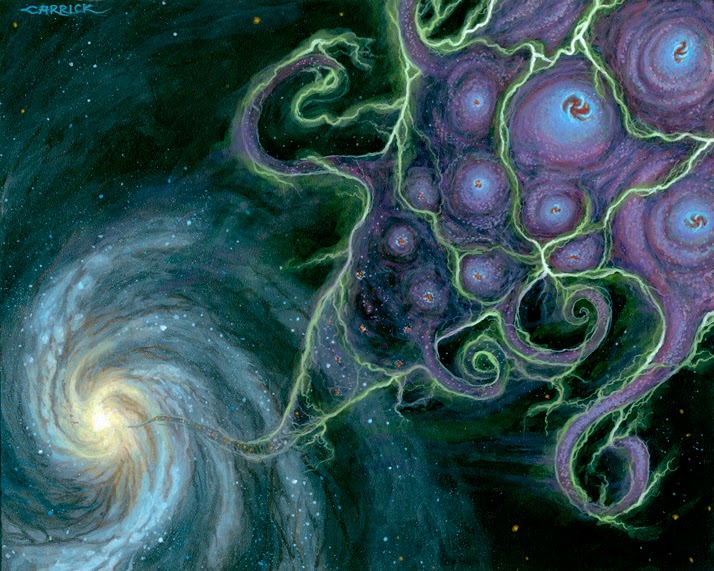 |
| One of the original paintings he brought in that stuck with me long after he left. |
Hearing Paul and seeing his work solidified in me what I wanted to do. I had always been interested in fantasy and science fiction. Looking at the artwork of book covers, RPG rule manuals and Magic: the Gathering trading cards had made me want to become an artist but I never realized that these people were illustrators. It seems weird to say that now but I just didn't know back then that there was a difference let alone such a dichotomy between so called 'fine art' and 'illustration'. I just thought they were all artists and that these particular artists painted fantasy or science fiction. I could get into my opinions about the break between fine art and illustration but that seems like it belongs in a future post...
Paul Carrick helped to open my eyes to illustration as a business. All of a sudden I realized that if I wanted to be a serious professional illustrator that I had to learn to make a living at it, and that it wasn't going to be easy. This was something that I wasn't going to learn in school. I immediately started to search for any book, blog, podcast or video that might help me learn, not only to draw and paint, but how to run this business I was getting into. I was determined to know all that I could about the field so I would fully understand what I was getting into.
I stayed along after Paul's lecture to talk more about the field and exchanged emails with him, asking him if I could keep in touch and send him my work every so often. This ended up being one of the best things for me. Every so often we would exchange emails and he would direct me along giving me much needed feedback. He made me realize the importance of reference, showed me where it was and wasn't working for me. He helped me with lighting and focusing the viewer's attention, using visual clues in the image to make things more or less apparent or even staged. He was always encouraging me along the way, letting me know how far I had come from when he first saw my work.
This kind of encouragement is key to a young student and indeed will be present with one's teachers and peers but it is always helpful to have the opinion of someone out in the business who isn't always nearby. An outside mentor who can lend a fresh set of eyes to your work. They may see something and say something that hasn't been said, something that perhaps you're working towards slowly but haven't yet realized for yourself. This kind of feedback can help you on your way by leaps and bounds and I am very grateful to have that with Paul Carrick.
For those of you who don't know Paul's work the link to his website can be found again HERE. He specializes in all things Lovecraft and has worked on many projects including Chaosium's Call of Cthulhu line. Below are some of my favorites...



























